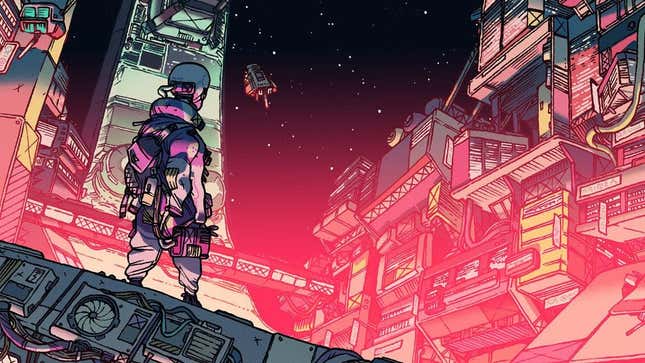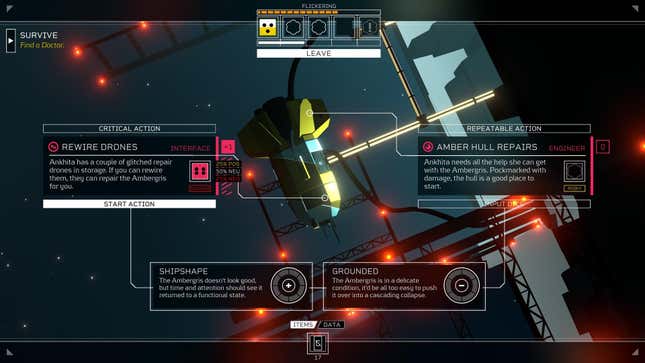
Just in time for its second anniversary, indie RPG Citizen Sleeper is getting a tabletop RPG (TTRPG) actual play set in the game’s universe. A collaboration between developer Jump Over The Age and games journalist Quintin Smith (of People Make Games), the actual play will air on May 7. It’s an exciting celebration for fans of 2022’s most underrated and unconventional RPG. But I’m here to tell anyone who hasn’t played Citizen Sleeper yet why they need to experience it ASAP.
2022 was a great year for expansive RPGs: Elden Ring got the year started strong while titles like Xenoblade Chronicles 3 and God of War Ragnarok kept the hits coming. Despite garnering critical acclaim, indie RPG Citizen Sleeper fell under the radar for many, which is unfortunate as it offered one of the most interesting experiences of the year. That’s because Citizen Sleeper (which is available to Xbox Game Pass subscribers) melds its tabletop influences with its narrative in one of the more seamless and impressive ways I’ve ever seen.
Citizen Sleeper is set on a massive space station called The Eye and puts players in the role of a Sleeper. Sleepers are synthetic robots made to be expendable slave labor for massive corporations, but you are lucky enough to escape at the beginning of the game. What follows is a story about trying to carve out a life for yourself on a massive space station amongst a community of others also dealing with the inequalities of society. And all of this is done through pretty simple interactions that center around dice rolls.
Like many tabletop games, Citizen Sleeper is a game heavily reliant on dice. At the beginning of every day, players roll a series of die, and the resulting rolls must be used throughout that day to attempt skill checks. This can be anything from trying to smooth talk your way into a new section of the station or a get through a successful shift at the local bar. And while you can fail skill check— in fact you will fail a lot of them in the early game—Citizen Sleeper has no real fail state. You can go through the entire game and fail skill checks relating to every part of the game’s core narrative and the game will tie that failure into how life on The Eye plays out.
Citizen Sleeper keeps the story going no matter what you roll (much like a skill game master), driving home themes about the hell of living in a post-industrial capitalist society. When you fail, the other people living on The Eye are there to pick you up. Without money, the local bar owner let me work some shifts so I could earn a wage. A man who runs a food stall gave me a free meal. A community garden offered me shelter one night in exchange for some work. All of these beautiful, emergent story moments are possible thanks to the game’s dice system. Every roll isn’t just a chance to pass or fail a challenge, it’s a chance to uncover a new aspect of Citizen Sleeper’s beautifully realized world.
At the end of Citizen Sleeper, most players will have fallen into a handful of similar endings. The game doesn’t have a million endings that account for every possible thing a player might want to do during their playthrough, but the way its mechanics naturally feed into joyous moments of narrative discovery make its world feel incredibly reactive. It’s a masterclass in design and storytelling that takes less than ten hours to beat, but will stay with you just as long as any 100-hour RPG. That’s why now is the perfect time to pick it up. Because then you can excitedly watch the anniversary TTRPG play out as well as get hyped for Citizen Sleeper 2.
.















